Sally Murphy's Blog, page 16
June 30, 2022
What I Read in June
Oh my! June has flown by – with only one post since my last ‘What I Read’ post. I will write more soon about just why I have been so busy in June, but, in the meantime, here is what I managed to get read in amongst the busyness.
Books for Kids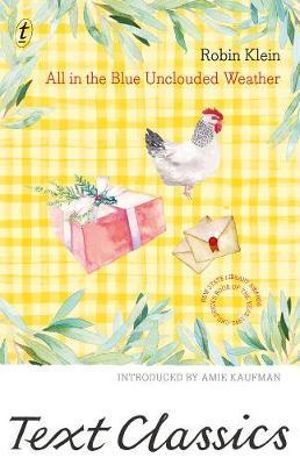 All in the Blue Unclouded Weather, by Robin Klein (Text, 2017). Continuing my exploration of Robin Klein’s works. This one was first published in 1991, but was re-released as part of Text’s Text Classics. I hadn’t read this before, but adored getting to know the Melling sisters, and will be following up with the sequels.
All in the Blue Unclouded Weather, by Robin Klein (Text, 2017). Continuing my exploration of Robin Klein’s works. This one was first published in 1991, but was re-released as part of Text’s Text Classics. I hadn’t read this before, but adored getting to know the Melling sisters, and will be following up with the sequels. Whisper on the Wind, by Claire Saxby & Jess Rackleft (Allen & Unwin, 2022). I love everything Claire writes, and this lyrical offering is no exception. It is gentle, and whimsical, and the illustrations are simply divine.
Whisper on the Wind, by Claire Saxby & Jess Rackleft (Allen & Unwin, 2022). I love everything Claire writes, and this lyrical offering is no exception. It is gentle, and whimsical, and the illustrations are simply divine.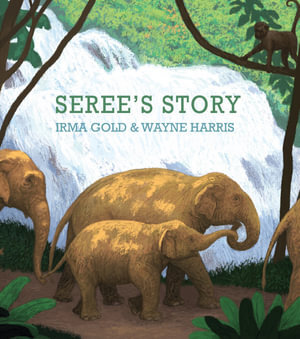 Seree’s Story, by Irma Gold & Wayne Harris (Walker Books, 2022). I seem to keep using the word divine when talking about picture books – but I’m afraid that I’ll keep using it, because it is the perfect word. This is the story of a young elephant taken from her mother for a life in a circus – and of their joyful reunion. Irma Gold is a fabulous wordsmith, and Wayne Harris one of my favourite illustrators, making this – you guessed it – a divine offering.
Seree’s Story, by Irma Gold & Wayne Harris (Walker Books, 2022). I seem to keep using the word divine when talking about picture books – but I’m afraid that I’ll keep using it, because it is the perfect word. This is the story of a young elephant taken from her mother for a life in a circus – and of their joyful reunion. Irma Gold is a fabulous wordsmith, and Wayne Harris one of my favourite illustrators, making this – you guessed it – a divine offering. Girl from the Sea, by Margaret Wild & Jane Tanner. I was lucky enough to buy this at the recent CBCA National Conference – which meant that I could then get it signed by the author. Margaret Wild is an absolute treasure (and was the author of the very first verse novel I ever read). This is a stunning book – with Wild’s lyrical tale of a girl watching a family living in a cottage by the sea, and Tanner’s illustrations, mostly in grey scale with tinges of blue, haunting and beautiful.
Girl from the Sea, by Margaret Wild & Jane Tanner. I was lucky enough to buy this at the recent CBCA National Conference – which meant that I could then get it signed by the author. Margaret Wild is an absolute treasure (and was the author of the very first verse novel I ever read). This is a stunning book – with Wild’s lyrical tale of a girl watching a family living in a cottage by the sea, and Tanner’s illustrations, mostly in grey scale with tinges of blue, haunting and beautiful.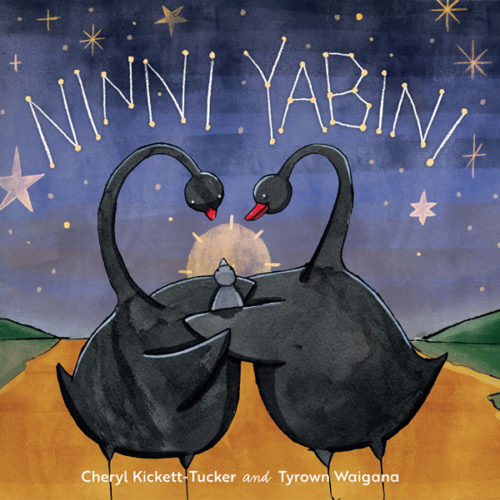 Ninni Yabini, by Cheryl Kickett-Tucker & Tyrown Waigana (Fremantle Press, 2022). This came to me as a review copy, and I am very glad to have received it. A beautiful story of a black swan family, told in dual languages – Noongar and English. It is so wonderful to see that the Noongar language – the language of the Noongar people of the South West corner of Australia, where I live and work is made accessible to children, families and educators through the story. I look forward to sharing this with my grandchildren and with my education students.
Ninni Yabini, by Cheryl Kickett-Tucker & Tyrown Waigana (Fremantle Press, 2022). This came to me as a review copy, and I am very glad to have received it. A beautiful story of a black swan family, told in dual languages – Noongar and English. It is so wonderful to see that the Noongar language – the language of the Noongar people of the South West corner of Australia, where I live and work is made accessible to children, families and educators through the story. I look forward to sharing this with my grandchildren and with my education students.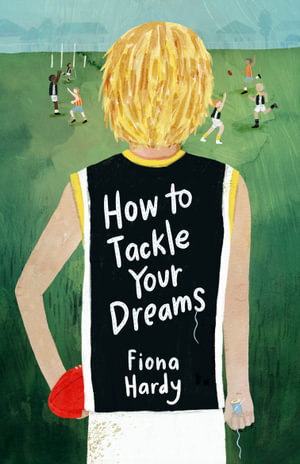 How to Tackle Your Dreams, by Fiona Hardy (Affirm Press, 2022). A story about football – and sewing. A surprising combination, which works well. Homer is a footy star, but not as big a star as his mother, who is in her debut in the women’s league. Homer still loves footy but he’s dealing with the absence of his father and his passion for sewing, which is pushing his friends away.
How to Tackle Your Dreams, by Fiona Hardy (Affirm Press, 2022). A story about football – and sewing. A surprising combination, which works well. Homer is a footy star, but not as big a star as his mother, who is in her debut in the women’s league. Homer still loves footy but he’s dealing with the absence of his father and his passion for sewing, which is pushing his friends away. Old Fellow, by Christopher Cheng & Liz Anelli (Walker Books, 2022). A day in the life of two old fellows – a man and his dog, and their adventures, mostly in the local park. A joyful celebration of aging, community and the bond between people and their dogs.
Old Fellow, by Christopher Cheng & Liz Anelli (Walker Books, 2022). A day in the life of two old fellows – a man and his dog, and their adventures, mostly in the local park. A joyful celebration of aging, community and the bond between people and their dogs.
Fiction for Young Adults
 Impossible Music, by Sean Williams (Allen & Unwin, 2019). Pulled from my to-read pile as I headed out the door for a flight, and I was so glad this one chose me. I read the whole way from Perth to Melbourne and then, in the hotel, had to finish it before bed. A moving story about facing up to the huge challenges life can throw up – for SImon, it is losing his hearing literally overnight.
Impossible Music, by Sean Williams (Allen & Unwin, 2019). Pulled from my to-read pile as I headed out the door for a flight, and I was so glad this one chose me. I read the whole way from Perth to Melbourne and then, in the hotel, had to finish it before bed. A moving story about facing up to the huge challenges life can throw up – for SImon, it is losing his hearing literally overnight. Another Holiday for the Prince, by Elizabeth Jolley, illustrated by Steven Bray (Angus & Robertson, 1996). Another op shop treasure. This is a small boo, reproducing a Jolley short story with the addition of illustrations and layout making it a kind of graphic novel. I really enjoyed the format as well as the story, told from the perspective of a teen whose mother seems to do everything in life to please the older brother – known as The Prince. An excellent short story.
Another Holiday for the Prince, by Elizabeth Jolley, illustrated by Steven Bray (Angus & Robertson, 1996). Another op shop treasure. This is a small boo, reproducing a Jolley short story with the addition of illustrations and layout making it a kind of graphic novel. I really enjoyed the format as well as the story, told from the perspective of a teen whose mother seems to do everything in life to please the older brother – known as The Prince. An excellent short story.Fiction for Adults
 Matthew Flinders’ Cat, by Bryce Courtenay (Penguin, 2002). This had been in my to-read pile for a while, after I bought it from a discard pile. Not sure why I had not read this before – I always find Courtenay’s work quite readable. I struggled a little with the nature of some of the subject matter here, set against some of the unsavoury parts of Sydney life.
Matthew Flinders’ Cat, by Bryce Courtenay (Penguin, 2002). This had been in my to-read pile for a while, after I bought it from a discard pile. Not sure why I had not read this before – I always find Courtenay’s work quite readable. I struggled a little with the nature of some of the subject matter here, set against some of the unsavoury parts of Sydney life.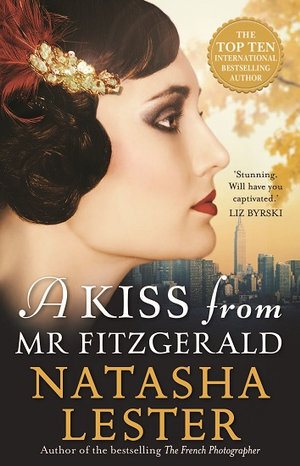 A Kiss From Mr Fitzgerald, by Natasha Lester (Hachette, 2017). I listened to this on audio, and really enjoyed the depiction of 1920s Manhattan, as well as the story of Evie, who is destined to be a wife and homemaker for a rich banker’s son, until she realises that she wants more: to be a doctor. Cut off by her family, and pushed out by all but her closest friends, she has to fight for what she is sure is her destiny.Non Fiction for Adults
A Kiss From Mr Fitzgerald, by Natasha Lester (Hachette, 2017). I listened to this on audio, and really enjoyed the depiction of 1920s Manhattan, as well as the story of Evie, who is destined to be a wife and homemaker for a rich banker’s son, until she realises that she wants more: to be a doctor. Cut off by her family, and pushed out by all but her closest friends, she has to fight for what she is sure is her destiny.Non Fiction for Adults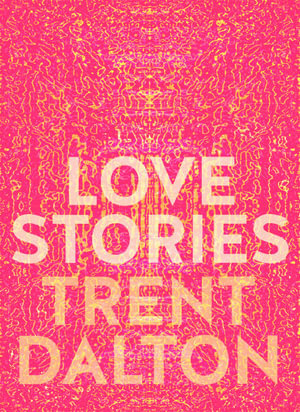 Love Stories, by Trent Dalton (Harper Collins, 2021). I listened to the audio version of this. What a joy to listen to Dalton read this heart filled book. I thought it would be a series of short stories, but what it is is a celebration of love in all its forms, as strangers share their stories of love with Dalton, and he, in turn, reflects on what love is.
Love Stories, by Trent Dalton (Harper Collins, 2021). I listened to the audio version of this. What a joy to listen to Dalton read this heart filled book. I thought it would be a series of short stories, but what it is is a celebration of love in all its forms, as strangers share their stories of love with Dalton, and he, in turn, reflects on what love is.
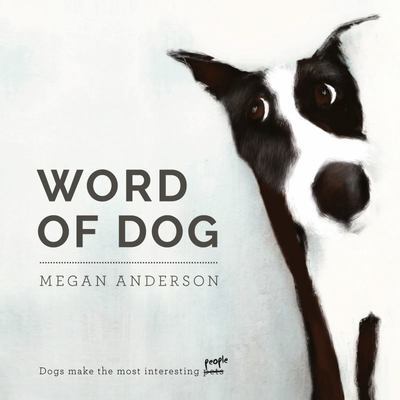 Word of Dog, by Megan Anderson (Fremantle Press, 2019). I bought this one at a Fremantle Press event in 2019 and then found it last week still in the paper bag when I was moving things out of my rental unit. Oops. Anyway, it is a quick, quirky read – though you can also dip in and out, because each page stands alone, Anderson’s dog art accompanied by little vignette-quotes from anonymous people on all kinds of things.
Word of Dog, by Megan Anderson (Fremantle Press, 2019). I bought this one at a Fremantle Press event in 2019 and then found it last week still in the paper bag when I was moving things out of my rental unit. Oops. Anyway, it is a quick, quirky read – though you can also dip in and out, because each page stands alone, Anderson’s dog art accompanied by little vignette-quotes from anonymous people on all kinds of things.That brings my total for 2022 to 81 so far. Half way through the year, I’m on track for my goal. Hopefully in July I will boost that total – I am taking a whole week off my day job next week.
June 2, 2022
Poetry Friday: Winter is Here
It’s Poetry Friday and it’s also, here in Australia, the first Friday of Winter. And boy have I been complaining about winter. I really do not like being cold. Or wet. (Unless it’s the kind of wet that comes from swimming and visiting my fishy friends, or standing under a hot shower).
I have been trying to practice gratitude and remember the good things about winter:
It does not last for the whole year.It brings rain, and we need rain for life.It is part of the great cycle of life.Coats and boots. I do like wearing warm coats and nice boots.In the midst of shivering and whinging, I had an email from the convenor of a poetry workshop I gave last week which was a wonderful, warm opportunity to share my love of poetry with passionate literacy educators on the other side of Australia. In her email, she shared of her favourite childhood poems. And suddenly I was warm right though – because it was an old favourite I had completely forgotten.
And, since it’s a winter poem, it’s an apt one to share today.
The Elf and The Dormouse by Oliver Herford
by Oliver HerfordUnder a toadstool crept a wee Elf,
Out of the rain to shelter himself.
Under the toadstool, sound asleep,
Sat a big Dormouse all in a heap.
Trembled the wee Elf, frightened and yet
Fearing to fly away lest he get wet.
To the next shelter—maybe a mile!
Sudden the wee Elf smiled a wee smile.
Tugged till the toadstool toppled in two.
Holding it over him, gaily he flew.
Soon he was safe home, dry as could be.
Soon woke the Dormouse—”Good gracious me!
“Where is my toadstool?” loud he lamented.
—And that’s how umbrellas first were invented.
Written in 1894, this is still such a lovely poem. I’m glad my new friend reminded me of its existence.
Now I’m off to warm my heart a little more, by dropping in my Poetry Friday friends. Today’s round up will be hosted by Karen .
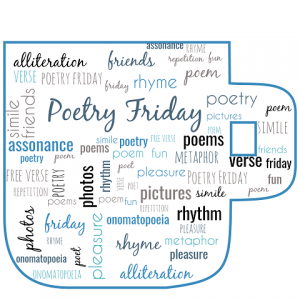
May Reads
May is over and June has begun, so it’s time to look back at what I read in the past month. It’s been a chaotic month, and I feel like I’ve hardly sat down, let alone read – but I actually managed to get through 24 books. Just shows what you can do when you snatch little pockets of each day to do what you love. Here’s what filled those pockets
Books for Kids
 What Snail Knows, by Kathryn Apel, illustrated by Mandy Foot (UQP, 2022). A really lovely verse novel about moving, friendship and family. Lucy and her Dad are always on the move, making it hard to make friends. But Lucy has Snail and, at her latest school, a human friend too. You can see my full review at Aussiereviews.
What Snail Knows, by Kathryn Apel, illustrated by Mandy Foot (UQP, 2022). A really lovely verse novel about moving, friendship and family. Lucy and her Dad are always on the move, making it hard to make friends. But Lucy has Snail and, at her latest school, a human friend too. You can see my full review at Aussiereviews. Like Pickle Juice on a Cookie, by Julie Sternberg, illustrated by Matthew Cordell (Amulet Books, 2011).Another verse novel – I’ve been on a bit of a binge lately, reading as many as I can get my hands on. This one is a gentle story about facing change. When the narrator, Eleanor, hears that her beloved babysitter is moving away, she is devastated. But as she prepares for other changes, including the start of a new school year, Eleanor builds a relationship with her new sitter.
Like Pickle Juice on a Cookie, by Julie Sternberg, illustrated by Matthew Cordell (Amulet Books, 2011).Another verse novel – I’ve been on a bit of a binge lately, reading as many as I can get my hands on. This one is a gentle story about facing change. When the narrator, Eleanor, hears that her beloved babysitter is moving away, she is devastated. But as she prepares for other changes, including the start of a new school year, Eleanor builds a relationship with her new sitter. 10.10 Poetry Anthology, edited and compiled by Bridget Magee. I won this book in a giveaway, which was particularly cool because I didn’t know I had entered it. It was a subscriber giveaway, drawn from subscriber’s the lovely Bridget’s Wee Words for Wee Ones Blog. All the poems are connected to the theme of ten – bot not all about the number ten. Instead there are poems about TEnderness, TENacity, TENsion and so on. Very clever. If you want a taste, you can hear one of Bridget’s own poems from the book here.Elmer Makes a Break, by Patrick Cook (Puffin, 1982). I rescued this from a library throw out trolley a few years ago, and it has been in my to read pile ever since. It was just the thing for a quick read on a cold May day. The humorous tale of a rat who wants an adventure, but gets more than he bargained for when he becomes a lab rat.
10.10 Poetry Anthology, edited and compiled by Bridget Magee. I won this book in a giveaway, which was particularly cool because I didn’t know I had entered it. It was a subscriber giveaway, drawn from subscriber’s the lovely Bridget’s Wee Words for Wee Ones Blog. All the poems are connected to the theme of ten – bot not all about the number ten. Instead there are poems about TEnderness, TENacity, TENsion and so on. Very clever. If you want a taste, you can hear one of Bridget’s own poems from the book here.Elmer Makes a Break, by Patrick Cook (Puffin, 1982). I rescued this from a library throw out trolley a few years ago, and it has been in my to read pile ever since. It was just the thing for a quick read on a cold May day. The humorous tale of a rat who wants an adventure, but gets more than he bargained for when he becomes a lab rat.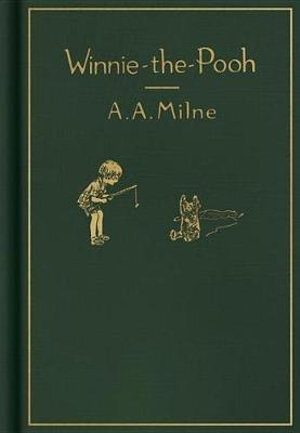 Winnie-the-Pooh, by A. A. Milne. I listened to the audio of this on a long drive in the country, and it certainly made the drive even lovelier. I love Pooh and his friends, and this was just a lovely trip down memory lane, to hear the voices done for me as I followed the adventures.
Winnie-the-Pooh, by A. A. Milne. I listened to the audio of this on a long drive in the country, and it certainly made the drive even lovelier. I love Pooh and his friends, and this was just a lovely trip down memory lane, to hear the voices done for me as I followed the adventures. Birdie, by Eileen Spinelli (Eerdmans, 2019) Another verse novel fromt he U. S. Birdie is still dealing with the loss of her much loved Dad, so when her mother stars dating again, she is not impressed. She is more open to her grandmother having a new boyfriend. At the same time she needs to deal with changes in her friendships. A lovely gentle story about grief and relationships and growing up.
Birdie, by Eileen Spinelli (Eerdmans, 2019) Another verse novel fromt he U. S. Birdie is still dealing with the loss of her much loved Dad, so when her mother stars dating again, she is not impressed. She is more open to her grandmother having a new boyfriend. At the same time she needs to deal with changes in her friendships. A lovely gentle story about grief and relationships and growing up. When We Were Very Young, by A. A Milne. Having read Winnie-the-Pooh, I couldn’t resist also dipping in to the rest of my collection of Milne’s work. This was a favourite collection of poetry in my childhood, and I still adore it – it even inspired a Poetry Friday post this month – and has done before, too.
When We Were Very Young, by A. A Milne. Having read Winnie-the-Pooh, I couldn’t resist also dipping in to the rest of my collection of Milne’s work. This was a favourite collection of poetry in my childhood, and I still adore it – it even inspired a Poetry Friday post this month – and has done before, too.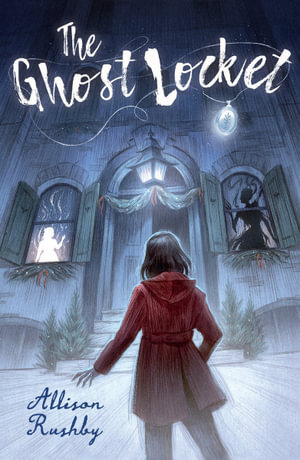 The Ghost Locket, by Alison Rushby (Walker Books, 2022). I do love a ghost story, and really enjoyed this one, set in London, where eleven year old Lolli deals with a sinister ghost lurking in the historic house run by her beloved Aunt Elsie.
The Ghost Locket, by Alison Rushby (Walker Books, 2022). I do love a ghost story, and really enjoyed this one, set in London, where eleven year old Lolli deals with a sinister ghost lurking in the historic house run by her beloved Aunt Elsie.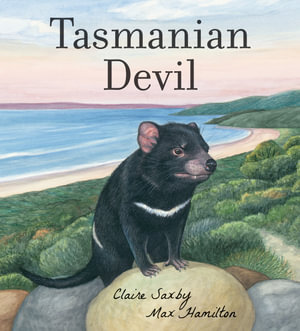 Tasmanian Devil, by Claire Saxby & Max Hamilton (Walker Books, 2022). My friend Claire writes the most beautiful, lyrical nonfiction ever. Yes, I’m biased because she’s my friend, but it’s true – she brings nature to life in exquisite ways. This time it’s the tassie devil, and the illustrative work of Max Hamilton is simply gorgeous too.
Tasmanian Devil, by Claire Saxby & Max Hamilton (Walker Books, 2022). My friend Claire writes the most beautiful, lyrical nonfiction ever. Yes, I’m biased because she’s my friend, but it’s true – she brings nature to life in exquisite ways. This time it’s the tassie devil, and the illustrative work of Max Hamilton is simply gorgeous too.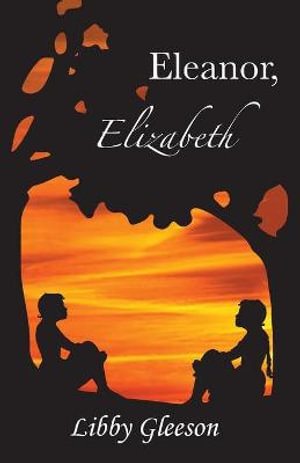 Eleanor, Elizabeth, by Libby Gleeson (Second Look Press, 2016). Reading Letters from Robin last month left me wanting to rediscover not just teh works of Robin Klein, but also some of my other favourites from the 80s and 90s. This lead me to reread this one, from Libby Gleeson, one of my favourite authors for young people. The story of Eleanor, who is unhappy about moving to the country, but finds comfort through connecting with her grandmother, whose diary she discovers and reads.
Eleanor, Elizabeth, by Libby Gleeson (Second Look Press, 2016). Reading Letters from Robin last month left me wanting to rediscover not just teh works of Robin Klein, but also some of my other favourites from the 80s and 90s. This lead me to reread this one, from Libby Gleeson, one of my favourite authors for young people. The story of Eleanor, who is unhappy about moving to the country, but finds comfort through connecting with her grandmother, whose diary she discovers and reads.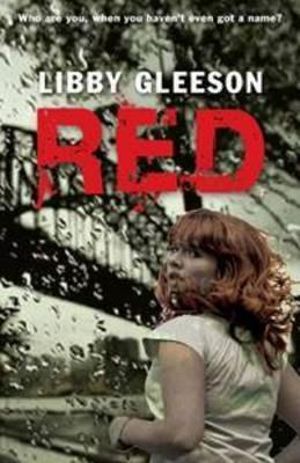 Red, by Libby Gleeson (Allen & Unwin, 2012). And another Libby Gleeson book, this time set in Sydney following a massive natural disaster. Red wakes up with no memory of who she is or why she is there. Her new friend Peri, himself homeless even before the storm, helps her unravel her past and what it is she must do next.
Red, by Libby Gleeson (Allen & Unwin, 2012). And another Libby Gleeson book, this time set in Sydney following a massive natural disaster. Red wakes up with no memory of who she is or why she is there. Her new friend Peri, himself homeless even before the storm, helps her unravel her past and what it is she must do next. Spi-ku: A Clutter of Short verse on Eight Legs, by Leslie Bulion & Rebert Meganck (ill.) (Peachtree Publishing, 2021). I do not love spiders, but I did love learning more about them through this collection. Using a variety of poetic forms and accompanying nonfiction text, this is a fun way of exploring spider facts.
Spi-ku: A Clutter of Short verse on Eight Legs, by Leslie Bulion & Rebert Meganck (ill.) (Peachtree Publishing, 2021). I do not love spiders, but I did love learning more about them through this collection. Using a variety of poetic forms and accompanying nonfiction text, this is a fun way of exploring spider facts. Blubber, by Judy Blume (Athaneum, 1974). Another classic read. First published in 1974 but this was my first time reading. Still topical and accessible as a look at the impacts of bullying, and the pressures of peer groups.
Blubber, by Judy Blume (Athaneum, 1974). Another classic read. First published in 1974 but this was my first time reading. Still topical and accessible as a look at the impacts of bullying, and the pressures of peer groups.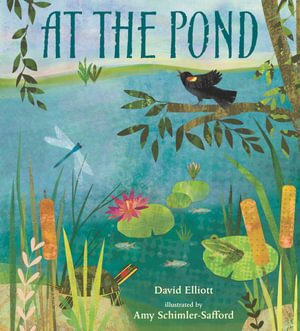 At the Pond, by David Elliott, illustrated by Amy Schimler-Safford (Candlewick, 2022). So much poetry this month! This one is a picture book length collection, with each poem introducing a different pond-resident and, at the same time, moving through the day. The illustrations, with collage and paint, are just divine.Books for Young Adults
At the Pond, by David Elliott, illustrated by Amy Schimler-Safford (Candlewick, 2022). So much poetry this month! This one is a picture book length collection, with each poem introducing a different pond-resident and, at the same time, moving through the day. The illustrations, with collage and paint, are just divine.Books for Young Adults The Black Flamingo, by Dean Atta (Hodder, 2019). Oh how I loved this book! Not only is it a verse novel, which (if you haven’t picked up on this) is my favourite genre, but it is is also just an amazing exploration of belonging, as Michael navigates his queer identity, his family dynamics, friendship and more.
The Black Flamingo, by Dean Atta (Hodder, 2019). Oh how I loved this book! Not only is it a verse novel, which (if you haven’t picked up on this) is my favourite genre, but it is is also just an amazing exploration of belonging, as Michael navigates his queer identity, his family dynamics, friendship and more. Roxy, by Neal Shusterman and Jarrod Shusterman (Walker Books, 2021). What a ride! This book made me uncomfortable from the moment I realised it was being narrated by two prescription drugs – and yet this discomfort was the very point of the book, and kept me reading. The premise is that what humans know as drugs or opioids are really malevolent gods, and two of those drugs – Roxy and Addison – are competing to see which one can can produce a lethal result the fastest – playing with two siblings as their targets. Confronting but very clever.
Roxy, by Neal Shusterman and Jarrod Shusterman (Walker Books, 2021). What a ride! This book made me uncomfortable from the moment I realised it was being narrated by two prescription drugs – and yet this discomfort was the very point of the book, and kept me reading. The premise is that what humans know as drugs or opioids are really malevolent gods, and two of those drugs – Roxy and Addison – are competing to see which one can can produce a lethal result the fastest – playing with two siblings as their targets. Confronting but very clever.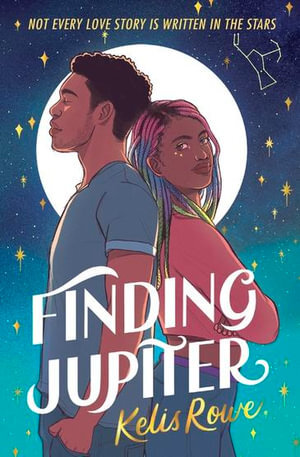 Finding Jupiter, by Kelis Rowe (Walker Books, 2022). I love receiving review copies and the way this takes me in such varied reading directions. Ray does not want a relationship, so when she meets Orion she is not ready for the attraction she feels. Orion is also resistant, but he feels pulled towards Ray in a way he can’t explain. Their romance is rocky, but it’s the tragic past that links their families that makes things tricky.
Finding Jupiter, by Kelis Rowe (Walker Books, 2022). I love receiving review copies and the way this takes me in such varied reading directions. Ray does not want a relationship, so when she meets Orion she is not ready for the attraction she feels. Orion is also resistant, but he feels pulled towards Ray in a way he can’t explain. Their romance is rocky, but it’s the tragic past that links their families that makes things tricky.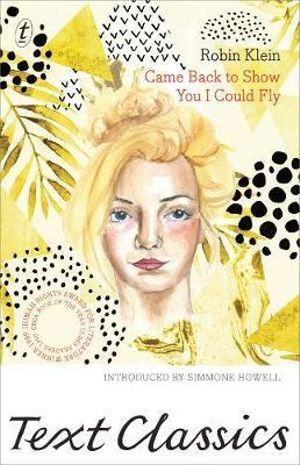 Came Back to Show You I Could Fly, by Robin Klein (Text Classics, 2017). First published in 1987, this book was just beyond my own teen reading years, so I have only ever read it as an adult, but I remember thinking it amazing in the 90s when I first read it. This reread did not disappoint. The characters of ten year old Seymour, q naïve and lonely boy, and Angie, a drug addict, and the way they form an unlikely friendship is really compelling and beautifully rendered. I wish I could write like that!Books for Adults
Came Back to Show You I Could Fly, by Robin Klein (Text Classics, 2017). First published in 1987, this book was just beyond my own teen reading years, so I have only ever read it as an adult, but I remember thinking it amazing in the 90s when I first read it. This reread did not disappoint. The characters of ten year old Seymour, q naïve and lonely boy, and Angie, a drug addict, and the way they form an unlikely friendship is really compelling and beautifully rendered. I wish I could write like that!Books for Adults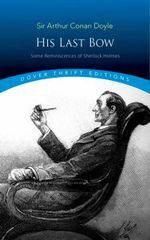 His Last Bow, by Arthur Conan Doyle. I started working my way through the complete collection of Sherlock Holmes stories last year, and this is the second last title. One to go. I am still enjoying the language and style, and (as I’ve said before) listening to them being read by Stephen Fry.
His Last Bow, by Arthur Conan Doyle. I started working my way through the complete collection of Sherlock Holmes stories last year, and this is the second last title. One to go. I am still enjoying the language and style, and (as I’ve said before) listening to them being read by Stephen Fry. The Seven Husbands of Evelyn Hugo, by Taylor Jenkins Reid (Simon & Schuster, 2021). This was recommended to me by one of my university students, who told me is one of the best books she’d ever read. High praise, and enough o make me curious. I really enjoyed this story – a glimpse at life behind the scenes in Hollywood’s glamour years, as well as an exploration of the challenges of being LGBTQI in this community, and of love in all its forms.Nonfiction for Adults
The Seven Husbands of Evelyn Hugo, by Taylor Jenkins Reid (Simon & Schuster, 2021). This was recommended to me by one of my university students, who told me is one of the best books she’d ever read. High praise, and enough o make me curious. I really enjoyed this story – a glimpse at life behind the scenes in Hollywood’s glamour years, as well as an exploration of the challenges of being LGBTQI in this community, and of love in all its forms.Nonfiction for Adults Ten Steps to Nanette, by Hannah Gadsby (Wavesound, 2022). I love listening to audiobooks, because it helps me on long drives, and also when doing dull stuff like housework. But there are some books that I believe should be read on audio because of the value of the author’s voice – and this is one of them. Listening to Hannah Gadsby tell her story is an absolute privilege. Not always easy, because of the subject matter, but always riveting and heartfelt and very moving. Superb.
Ten Steps to Nanette, by Hannah Gadsby (Wavesound, 2022). I love listening to audiobooks, because it helps me on long drives, and also when doing dull stuff like housework. But there are some books that I believe should be read on audio because of the value of the author’s voice – and this is one of them. Listening to Hannah Gadsby tell her story is an absolute privilege. Not always easy, because of the subject matter, but always riveting and heartfelt and very moving. Superb.2.  Let Go, by Hugh van Cuylenburg (Penguin, 2021). From the author of The Resilience Project, which I read twice last year, this one is a good complement, exploring the additional challenges to resilience which the pandemic, social media and more can throw up, and new insights into van Cylenburg’s own journey.
Let Go, by Hugh van Cuylenburg (Penguin, 2021). From the author of The Resilience Project, which I read twice last year, this one is a good complement, exploring the additional challenges to resilience which the pandemic, social media and more can throw up, and new insights into van Cylenburg’s own journey.
3.  The Ballroom Murder, by Leigh Straw (Fremantle Press, 2022). The true story of a murder that happened in Perth in 1925, when a young woman, Audrey Jacob, shot dead her former fiancé – in he middle of a charity ball at Government House. Drawing from newspaper accounts, court records and other historical documents, this is an intriguing story. Mine was a review copy – the book is not released until August.
The Ballroom Murder, by Leigh Straw (Fremantle Press, 2022). The true story of a murder that happened in Perth in 1925, when a young woman, Audrey Jacob, shot dead her former fiancé – in he middle of a charity ball at Government House. Drawing from newspaper accounts, court records and other historical documents, this is an intriguing story. Mine was a review copy – the book is not released until August.
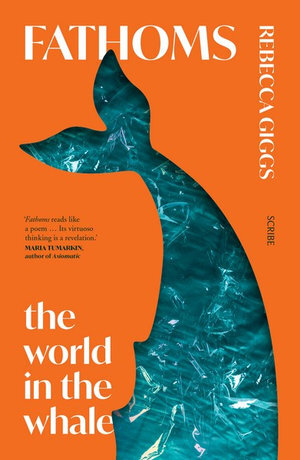 Fathoms: The World in the Whale, by Rebecca Giggs (Scribe, 2020). Youc an tell from the cover that this is a book about whales – but it is about so much more, too. Framed against an exploration of the whale and humans’ relationship to whales, this books is philosophical, sad, and hopeful in turn. beautiful reading.
Fathoms: The World in the Whale, by Rebecca Giggs (Scribe, 2020). Youc an tell from the cover that this is a book about whales – but it is about so much more, too. Framed against an exploration of the whale and humans’ relationship to whales, this books is philosophical, sad, and hopeful in turn. beautiful reading. This brings my total for the year to 68 books read so far – nearly half way to my goal which, I guess, means I’m on track.
That’s it from me, but I’d love to hear what you’ve been reading.
May 19, 2022
Poetry Friday: Stairs
This week on a car trip I listened to the audiobook of Winnie the Pooh and laughed anew at the stories I loved as a child. I especially always love that Pooh is a poet, and makes up poems when he’s feeling sad, or glad, or just because. They are often nonsensical but always fun to repeat.
This lead me, in turn, to pick up my copies of A.A. Milne’s poetry books and revisit them. I was home alone and found myself reading them aloud, because that is what I felt like doing (As an aside, being home alone can be just fabulous for thing like reading!).
And I came back to how much I love many of those poems, but always always this one:
Halfway Down
Halfway down the stairs
is a stair
where I sit.
there isn’t any
other stair
quite like
it.
(you can read the rest of the poem, which is copyright, here)
Why this poem? I think because, growing up, we had a big staircase and those stairs were the scene of a lot of games. I grew up in a country hotel and we lived upstairs while my parents ran their business downstairs. the stairs were not grand, but to a child they were exciting, and adventurous, and I spent many hours trying to master jumping to skip more than the bottom three, or to slide down the bannister (sorry Mum). But also, just sitting on the stairs, reading, or waiting for Mum, or dreaming.
So, it seemed this poem was written just for little me. And when I read it now I still get the tingle of rightness of this being for me, about me. Do you have a poem from your own childhood that does this – or, like me, more than one such poem?
I am pretty sure I have shared this clip before, but what’s not love about Robin the Frog sharing my favourite poem?
These days I don’t love stairs so much, but on my beach walks, I do need to climb down (and then, of course, back up)these amazing stairs.
And now I’m off to find more poetry that makes me smile, because it’s Poetry Friday, hosted today by Carmela at Teaching Authors.
May 12, 2022
Poetry Friday: Verse Novels are Awesome
Yesterday I had the very great pleasure of being part of the School Library Association of Victoria’s online Reading Forum, with a panel discussing one of my great loves – verse novels. Panellists included the amazing Kathryn Apel (poet extraordinaire), the equally amazing Zana Fraillon (whose prose I always adore, and whose first verse novel I cannot wait to get my hands on), (amazing librarian from Brighton Grammar School) and Ruth Nitschke (from the fabulous National Centre for Australian Children’s Literature). And the attendees were librarians, teacher-librarians and other educators from across Victoria and further afield.
What an event! So much love for verse novels from the presenters and the attendees. One thing I loved was that we did not meet and plan who would say what, and yet we were such a great combination, with common threads running through without being repetitive. I know many of the attendees were already fans of the verse novel, but I also got the feeling that they were leaving with big to-read lists and even more passion for sharing verse novels with young readers. Winning!
Some of the takeaways for those of you who missed it: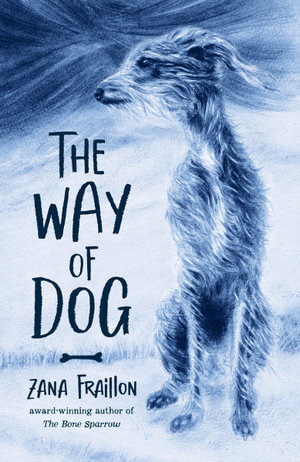
Okay, maybe I’m repeating myself on the awesome bit, but this was truly the message that the evening got across – both from the presenters and from the participants.
I logged out with a huge smile on my face, and a new list of to-reads. I am constantly surprised by how many verse novels I haven’t yet read – but also delighted because that means more reading joy in my future.
 You can find the recommendations from Kelsy on her padlet here. I also cannot wait to get my hands on Zana’s The Way of Dog. I am lucky to have already read all of Kat’s verse novels, including the wonderful What Snail Knows, which I reviewed here. And, of course, a massive shout out to the amazing NCACL Verse Novel resource, where you can learn more about all the wonderful verse novels for children and young adults which have ever been published in Australia.
You can find the recommendations from Kelsy on her padlet here. I also cannot wait to get my hands on Zana’s The Way of Dog. I am lucky to have already read all of Kat’s verse novels, including the wonderful What Snail Knows, which I reviewed here. And, of course, a massive shout out to the amazing NCACL Verse Novel resource, where you can learn more about all the wonderful verse novels for children and young adults which have ever been published in Australia.
The other reason I’m smiling, is because today is Poetry Friday – so there is lots more poetry goodness ahead as I browse my friends’ poetic offerings. Rose is hosting this week’s the roundup here.
May 5, 2022
Poetry Friday: The Science of Poetry
Last week’s post was a bit of a passionate rant about how important it is to share poetry, and to do so in ways that are pleasurable.
All week I have been wondering why I didn’t mention a little piece of research that I came across during my doctoral studies and which I often cite. So, here it is: reading poetry does magic stuff to your brain that reading prose doesn’t. In short, a study using fMri (a brain scan technology) found that when participants read their favourite poetry the parts of their brain related to memory and physical reaction (like shivers down the spine) were activated. For a better explanation, you can see this news report here or, if you want the more detailed scientific paper, you can search an academic library for the full article by Zeman, Milton, Smith and Rylance (abstract here) .
I love it when science proves what we poetry lovers already know – that poetry is a whole body, whole self activity. Because while we don’t need scientific proof, that evidence is great for sharing with poetry doubters.
And, while I must confess that I have not written a poem of my own this week, I figure this is a good time to share a poem which definitely gives me all the feelings.
A Quoi Bon Dire
Beautiful Sa Pa.
by Charlotte Mew
Seventeen years ago you said
Something that sounded like Good-bye;
And everybody thinks that you are dead,
But I.
So I, as I grow stiff and cold
To this and that say Good-bye too;
And everybody sees that I am old
But you.
And one fine morning in a sunny lane
Some boy and girl will meet and kiss and swear
That nobody can love their way again
While over there
You will have smiled, I shall have tossed your hair.
Why this poem? It is a little sad, but, for me, it warms my heart with its observations (even celebration) of love, and how we can hold that love long after someone has left our lives. It may be a romantic love, but in my case, this week marks anniversaries of two losses – my sister and my father – and it doesn’t matter that are gone six years and one year respectively – I love them just as much now as I did when I could see them.
I’m off to read more poetry and more thoughts about poetry because today is Poetry Friday. The roundup is being hosted Jama So if you want to activate your brain, head over there and do some reading of your own:)
And the Winner Is….
Thank you to everyone who entered my book giveaway and came along to celebrate the double birthday of Worse Things and Pearl Verses the World.
The winner was determined randomly – I entered all entrants into a spreadsheet in the order they commented, then used Google’s random number generator to select a winner. The winning number was entry number one:

And this entry belonged to Gail Erskine. This is well deserved as Gail is an amazing educator and advocate for children’s books. Your book will be winging its way to you very soon Gail!
If you entered and didn’t win, I’m sorry – but hopefully you enjoyed entering. Both books (and my other verse novels) are still in print and therefore available in good bookstores and online – or at your local library!
Thanks again everyone. 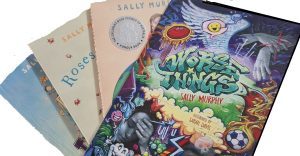
May 1, 2022
Book Birthdays – and a Giveaway!
Happy birthday to you! 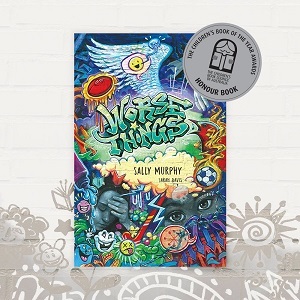
Happy birthday tooo you!
Happy birthday dear Worse Things
Happy birthday to yoooooooooooouuuu!
That’s right, today is a special day because it is Worse Things‘ second birthday. Hard to believe that it has been out in the world for two whole years.
In that time it has been read and (hopefully) loved by readers all around Australia. And I am forever grateful that Walker Books published it and that the absolutely amazing and awesome illustrator Sarah Davis illustrated it.
But wait – there’s more because (drumroll please) …..
it’s ALSO Pearl Verses the World‘s birthday.
Happy birthday to you!
Happy birthday tooo you!
Happy birthday dear Pearl
Happy birthday to yoooooooooooouuuu!
Now, if you read this book when it first came out then you might be amazed to realise how very quickly time has flown because Pearl Verses the World is not two years old, and not even three years old. In fact (I CAN NOT believe this) Pearl Verses the World is 13 years old today!
13 years since this little book was published (again by the amazing team at Walker Books, and illustrated by the equally as amazing Heather Potter) and changed my writing world.
So happy birthday little book babies. I am inordinately proud of you and of the fact you both remain in print. Long may you remain out there filling hearts and minds with your tales.
And to you, amazing readers – a massive thankyou! Stories work because readers pick them up, digest them and make them their own.
Note: if you have not read one or both of these books, this thank you is still for you – because I am sure you have read other, equally loved books by other amazing authors. And that’s fine. But if you’d like a sneak peak of Worse Things, here’s me reading the opening, filmed during lockdown when the book was released:
And here’s me reading the opening of Pearl Verses the World during the same lockdown.
And, because it’s a double birthday, I have a present to give away. Comment on this post and let me know which of these two books you would like to win. I will randomly choose one lucky winner on Thursday night (my time) and announce the winner here on my blog. Get to it! (nb If you win I will contact you for your postal address).
April 30, 2022
April Reads
Twenty books! I knew I had been doing a lot of reading in April but am still surprised with my month’s total. Some excellent reads, and a real range.
Books for Kids
 The Vexatious Haunting of Lily Griffin, by Paula Hayes, illustrated by Katy Jiang (Fremantle Press, 2022). A fun story of ghosts, family and friendship. There are some serious issues explored here – bullying, family violence and more – but also lighter moments, including a naughty ghost with a sweet tooth.
The Vexatious Haunting of Lily Griffin, by Paula Hayes, illustrated by Katy Jiang (Fremantle Press, 2022). A fun story of ghosts, family and friendship. There are some serious issues explored here – bullying, family violence and more – but also lighter moments, including a naughty ghost with a sweet tooth.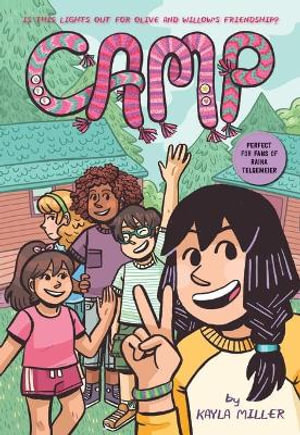 Camp, by Kayla Miller (Walker Books, 2022). A lovely graphic novel about navigating the challenges of friendship in the setting of a holiday camp.
Camp, by Kayla Miller (Walker Books, 2022). A lovely graphic novel about navigating the challenges of friendship in the setting of a holiday camp. Our Country: Ancient Wonders, by Mark Greenwood & Frane Lessac (Walker Books, 2022). I always love a book by this talented pair. This time the focus is on Australia’s ancient wonders, from dinosaur trails to meteorite craters, and more.
Our Country: Ancient Wonders, by Mark Greenwood & Frane Lessac (Walker Books, 2022). I always love a book by this talented pair. This time the focus is on Australia’s ancient wonders, from dinosaur trails to meteorite craters, and more.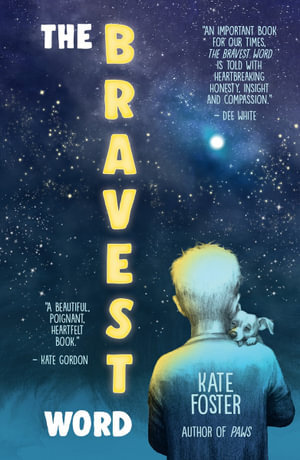 The Bravest Word, by Kate Foster (Walker Books, 2022). This was lovely – the story of an 11 year old boy, Matt, who connects with, and saves, a neglected dog while also finding a way to confront the depression which is gripping him. Beautifully wrought.
The Bravest Word, by Kate Foster (Walker Books, 2022). This was lovely – the story of an 11 year old boy, Matt, who connects with, and saves, a neglected dog while also finding a way to confront the depression which is gripping him. Beautifully wrought.
 Beaver Towers, by Nigel Hinton (Abelard, 1980). A cute story of a young boy whose kite whisks him away to a far away island where he must help beavers, and other animals, take back their castle from a magic witch.
Beaver Towers, by Nigel Hinton (Abelard, 1980). A cute story of a young boy whose kite whisks him away to a far away island where he must help beavers, and other animals, take back their castle from a magic witch.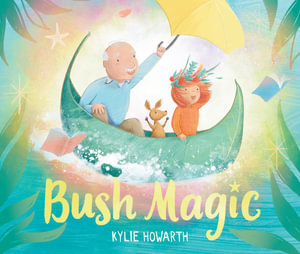 Bush Magic, by Kylie Howarth (Walker Books, 2022). This delightful picture book is, as the name suggests, magic. An imaginative adventure highlighting the bond between littles and grandparents. Love it!Books for Young Adults
Bush Magic, by Kylie Howarth (Walker Books, 2022). This delightful picture book is, as the name suggests, magic. An imaginative adventure highlighting the bond between littles and grandparents. Love it!Books for Young Adults
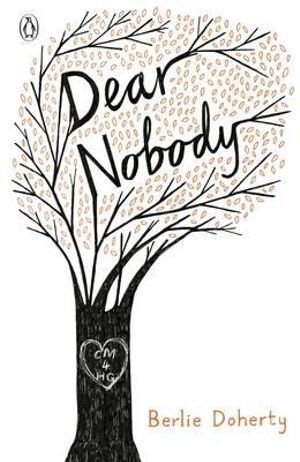 Dear Nobody, by Berlie Doherty (Harper Collins, 1991). This one is a classic, but I hadn’t read it before and picked it up in an op shop a while back. The story of Chris and Helen who, in their final year of highschool, find their plans and dreams changed when Helen falls pregnant. Told mostly from Chris’s viewpoint, as well as through letters which Helen writes to her unborn baby. There was a lot to connect with here, as I was a young mother myself many moons ago.Frenchtown Summer, by Robert Cormier (Puffin Books, 1999). I only recently heard of this book, recommended by another verse novelist, and tracked down a copy . I did not know Robert Cormier had written in verse, but am glad now that I do know and have read this. Set in 1938 and following one summer in 12 year old Eugene’s life, with his relationship with his seemingly distant father being a core focus. The verse is beautiful and as haunting as the town (Frenchtown) and events.
Dear Nobody, by Berlie Doherty (Harper Collins, 1991). This one is a classic, but I hadn’t read it before and picked it up in an op shop a while back. The story of Chris and Helen who, in their final year of highschool, find their plans and dreams changed when Helen falls pregnant. Told mostly from Chris’s viewpoint, as well as through letters which Helen writes to her unborn baby. There was a lot to connect with here, as I was a young mother myself many moons ago.Frenchtown Summer, by Robert Cormier (Puffin Books, 1999). I only recently heard of this book, recommended by another verse novelist, and tracked down a copy . I did not know Robert Cormier had written in verse, but am glad now that I do know and have read this. Set in 1938 and following one summer in 12 year old Eugene’s life, with his relationship with his seemingly distant father being a core focus. The verse is beautiful and as haunting as the town (Frenchtown) and events.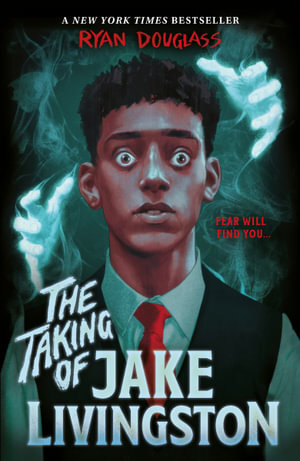 The Taking of Jake Livingston, by Ryan Douglass (Andersen Press, 2022). Not my usual cup of tea (sent to me as a review copy) – thriller with ghosts, ectoplasm, and lots of gore – but once I started I couldn’t put it down. Jake can see ghosts and, chillingly, watches them replay their last living moments on a loop. He’s being targeted by the perpetrator of a recent school shooting, and it seems the ghost has plans for him. If that isn’t enough, he’s the only black kid at his school, and grappling with his sexual identify. That’s a lot, but it’s handled well, making the book very readable, if a little scary.
The Taking of Jake Livingston, by Ryan Douglass (Andersen Press, 2022). Not my usual cup of tea (sent to me as a review copy) – thriller with ghosts, ectoplasm, and lots of gore – but once I started I couldn’t put it down. Jake can see ghosts and, chillingly, watches them replay their last living moments on a loop. He’s being targeted by the perpetrator of a recent school shooting, and it seems the ghost has plans for him. If that isn’t enough, he’s the only black kid at his school, and grappling with his sexual identify. That’s a lot, but it’s handled well, making the book very readable, if a little scary. The River and the Book, by Alison Croggon (Walker Books, 2015). I’m not sure why I hadn’t read this before, but am glad I now have. With elements of fable and magical realism, this is the story of the two treasures in Simbala’s life – the river, which flows through her village, and the Book, which guides the decisions of of the villagers. But the river is affected by the actions of developers further upstream, and Sim, who is the Keeper of the Book, searches for answers, not knowing that the book itself is also threatened.
The River and the Book, by Alison Croggon (Walker Books, 2015). I’m not sure why I hadn’t read this before, but am glad I now have. With elements of fable and magical realism, this is the story of the two treasures in Simbala’s life – the river, which flows through her village, and the Book, which guides the decisions of of the villagers. But the river is affected by the actions of developers further upstream, and Sim, who is the Keeper of the Book, searches for answers, not knowing that the book itself is also threatened. Baby Love, by Jacqueline Wilson (Penguin, 2022). I spotted this in a bookshop and, having recently read Dear Nobody, was interested to see another take on the topic of teen pregnancy. I have to say that, having been a teen mother myself (at age 18), some of the events felt a bit close to home – but in the kind of way that made me (or my teen self) feel seen. Set in 1960, with a 14 year old main character, Laura, this was a really moving take on the subject. I had to keep reading – started it late one night and finished it the next afternoon.
Baby Love, by Jacqueline Wilson (Penguin, 2022). I spotted this in a bookshop and, having recently read Dear Nobody, was interested to see another take on the topic of teen pregnancy. I have to say that, having been a teen mother myself (at age 18), some of the events felt a bit close to home – but in the kind of way that made me (or my teen self) feel seen. Set in 1960, with a 14 year old main character, Laura, this was a really moving take on the subject. I had to keep reading – started it late one night and finished it the next afternoon.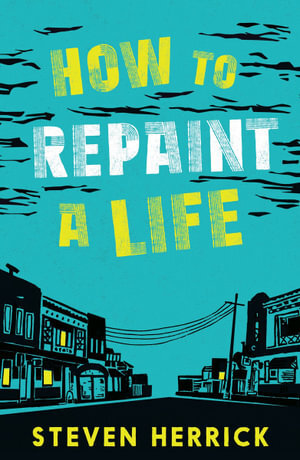 How to Repaint a Life, by Steven Herrick (UQP, 2021). I adore Steven Herrick’s wirting – he is, after lal, one of the reasons I fell in love with the evrse novel form. This one is not in verse, but it bears his trademark forthrightness. His characters and their lives are real and relatable, and I love getting to know them, even in the midst of their pain. This one is the story if Isaac, escaping his old life with an abusive father, and trying to find himself in a small town, where he meets Sophie, who wouldn’t mind a bit of change in her own life.
How to Repaint a Life, by Steven Herrick (UQP, 2021). I adore Steven Herrick’s wirting – he is, after lal, one of the reasons I fell in love with the evrse novel form. This one is not in verse, but it bears his trademark forthrightness. His characters and their lives are real and relatable, and I love getting to know them, even in the midst of their pain. This one is the story if Isaac, escaping his old life with an abusive father, and trying to find himself in a small town, where he meets Sophie, who wouldn’t mind a bit of change in her own life.
 White Rose, by Kip Wilson (Versify, 2019). A historical verse novel based ona true story, this one made me gasp with its subject matter and ability to make it so very real. The story of German student Sophie Scholl who, during World War 11 had the courage to speak out against the fascist regime in her country.
White Rose, by Kip Wilson (Versify, 2019). A historical verse novel based ona true story, this one made me gasp with its subject matter and ability to make it so very real. The story of German student Sophie Scholl who, during World War 11 had the courage to speak out against the fascist regime in her country. Dying to Tell Me, by Sherryl Clark (2014). One of my goals these past couple of years is to catch up on books by favourite authors. This is one of those – I am unsure why I hadn’t read this before, but looking for something else I was reminded about this one and ordered it. Sherryl is a really versatile author, and this one is part ghost story, part crime fiction and also explores the impact of family breakups. It makes for an absorbing blend.Fiction for Adults
Dying to Tell Me, by Sherryl Clark (2014). One of my goals these past couple of years is to catch up on books by favourite authors. This is one of those – I am unsure why I hadn’t read this before, but looking for something else I was reminded about this one and ordered it. Sherryl is a really versatile author, and this one is part ghost story, part crime fiction and also explores the impact of family breakups. It makes for an absorbing blend.Fiction for Adults
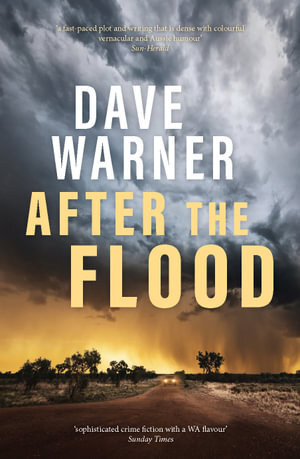 After the Flood, by Dave Warner (Fremantle Press, 2022). This was a review copy and is not due for release till August. Set chiefly in and aroudn Broome, this is crime fiction with a bite – industrial espionage, protesters, grizzly deaths, and a gritty detective determined to unravel the truth.
After the Flood, by Dave Warner (Fremantle Press, 2022). This was a review copy and is not due for release till August. Set chiefly in and aroudn Broome, this is crime fiction with a bite – industrial espionage, protesters, grizzly deaths, and a gritty detective determined to unravel the truth.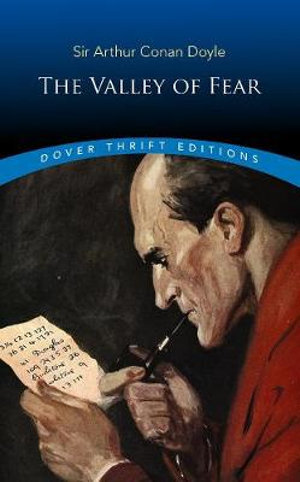 The Valley of Fear, by Arthur Conan Doyle. I started working my way through the collection of Sherlock Holmes stories, read by Stephen Fry, lats year, and am still going – after this one there are two more books to go. I’m still enjoying them, and have to confess I’m a little sad to be coming to the end.Nonfiction for Adults
The Valley of Fear, by Arthur Conan Doyle. I started working my way through the collection of Sherlock Holmes stories, read by Stephen Fry, lats year, and am still going – after this one there are two more books to go. I’m still enjoying them, and have to confess I’m a little sad to be coming to the end.Nonfiction for Adults
 A Repurposed Life, by Ronni Kahn, with Jessica Chapnik Kahn (Murdoch Press, 2020). When I saw (on TV) Ronni Kahn, the founder of the amazing Oz Harvest, speaking at the Press Club last month I straight away logged into Audible and bought and downloaded her book. I wasn’t disappointed. An amazing life, and lovely to hear it read by Ronni herself.Letting Go: The Pathway of Surrender, by David R. Hawkins (Audible). I listened to this as it was free in a two for one deal at Audible and I just chose something a little randomly to go alongside the book I wanted. I’m a little bit torn about commenting on/sharing this book because it has some really good takeaways about (as the title suggest) letting go of negative emotions (not suppressing, but letting go) and the power of this for being happier and healthier. But there are some bits which I was quite trouble about, including parts where I felt there was some victim blaming – around illness , disadvantage and misfortune. For myself I was able to let these go and focus on the bits that were relevant and helpful.
A Repurposed Life, by Ronni Kahn, with Jessica Chapnik Kahn (Murdoch Press, 2020). When I saw (on TV) Ronni Kahn, the founder of the amazing Oz Harvest, speaking at the Press Club last month I straight away logged into Audible and bought and downloaded her book. I wasn’t disappointed. An amazing life, and lovely to hear it read by Ronni herself.Letting Go: The Pathway of Surrender, by David R. Hawkins (Audible). I listened to this as it was free in a two for one deal at Audible and I just chose something a little randomly to go alongside the book I wanted. I’m a little bit torn about commenting on/sharing this book because it has some really good takeaways about (as the title suggest) letting go of negative emotions (not suppressing, but letting go) and the power of this for being happier and healthier. But there are some bits which I was quite trouble about, including parts where I felt there was some victim blaming – around illness , disadvantage and misfortune. For myself I was able to let these go and focus on the bits that were relevant and helpful.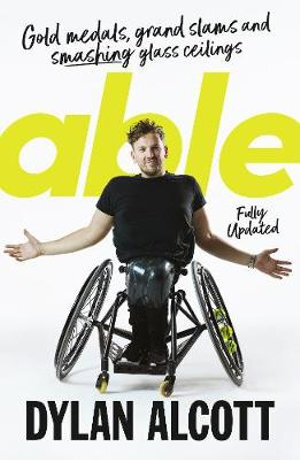 Able, by Dylan Alcott (Harper Collins/Bolinda Audio, 2019). This was a featured title on Audible this month, and I’m glad I chose to download it. Dylan, the current Australian of the Year is an inspirational, funny, open and big hearted person, and listening to his story read in his voice was a real treat.
Able, by Dylan Alcott (Harper Collins/Bolinda Audio, 2019). This was a featured title on Audible this month, and I’m glad I chose to download it. Dylan, the current Australian of the Year is an inspirational, funny, open and big hearted person, and listening to his story read in his voice was a real treat.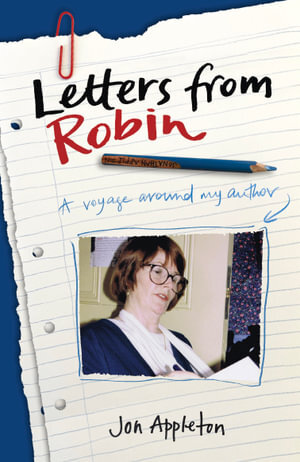 Letters from Robin, by Jon Appleton (Noble Books, 2022). I bought this one after reading about it in Magpies Magazine, and am glad I did. A biography of Robin Klein told from the perspective of Appleton, who wrote to Robin when he was eleven – and thus began a thirteen year correspondence with her. Appleton went on, while still at school, to establish and publish Rippa Reads, and then to work in publishing. This memoir of that friendship also traces Klein’s career, as well as giving a unique insight into the children’s book industry of the 1980s and 1990s. The only problem with reading this is that I know have a big list of books I want to read or reread.
Letters from Robin, by Jon Appleton (Noble Books, 2022). I bought this one after reading about it in Magpies Magazine, and am glad I did. A biography of Robin Klein told from the perspective of Appleton, who wrote to Robin when he was eleven – and thus began a thirteen year correspondence with her. Appleton went on, while still at school, to establish and publish Rippa Reads, and then to work in publishing. This memoir of that friendship also traces Klein’s career, as well as giving a unique insight into the children’s book industry of the 1980s and 1990s. The only problem with reading this is that I know have a big list of books I want to read or reread.
So that’s what I read in April, bringing my total for the year to 44 – and 109 to go to reach my target, which seems a lot. But we shall see.
I’d love to hear what YOU have been reading.
April 28, 2022
Poetry Friday: Some thoughts on poetry
In my dayjob as a lecturer in literacy and education, the two key messages I constantly try to impart to these future teachers is that if you are going to teach reading, you need to be a reader yourself and if you are going to teach writing, you need to be a writer. Sometimes I think my students get sick of me repeating these messages, but I also try to model what that looks like in every class, by reading to and with my students, and writing with them too.
The unit I am teaching this Semester is an elective called Creative Literacies, and it is all about teaching literacy, and the subject English, in creative ways and to develop creativity in students. Each week we look at different aspects of the curriculum – reading, writing, nonfiction, visual arts and more. But this week’s topic is my favourite one: Poetry.
I love teaching this class – although one two hour block seems to go past sooooo quickly. It’s less of a lecture and more of impassioned call to action, beginning with an explanation to my students of my own love of poetry and how that love was almost quashed by high school English and the dreaded exercises in Practical Criticism (or Prac. Crit. as they were always called).
If you are not familiar with a prac. crit, don’t worry. What this involved was being given an unseen poem, and then having to write an essay about it. That was pretty much the guidance I remember receiving. And I had no idea how to do it. I was, apparently, required to read the poem, see past the words to all the hidden layers and then write eloquently about what it meant and how the poem imparted that meaning.
I remember feeling dumb.
Every
single
time.
It seemed my classmates could see those layers. But I just felt dread. Was I getting the ‘right’ meaning? And was this meaning imparted through iambic pentameter? Trochaic something-or-other?
Amazingly, I managed to pass English Literature in my final year 12 exams, but it was my worst subject. Luckily I also took regular English, and that was my best. And somehow, in spite of that experience, I still loved poetry – just not in the classroom. And ended up studying literature at university and, eventually, completed a PhdD focussing on children’s poetry – though there was not a prac. crit. in sight. [Side note: On my very first teaching practice as a student teacher, an English teacher called Ron taught his students how to write a prac. crit. It was the first time I had heard it explained in a way I understood. And I have never forgotten that lesson – and I used his method to teach my own students for many years In fact, if I do say so myself, I could write a pretty mean prac. crit these days, if I wanted to. Which I don’t.]
Anyway, back to this week’s class. As well as telling my own poetry journey as an introduction, we spent our class looking at brilliant examples of poetry, including verse novels, some simple writing exercises and lots of talk about poetry. By the end of the class I could see that my students were enthused about poetry – partly because of the class, and partly because they are bright individuals who already have deep interests in reading and writing which will make them fine teachers.
If you are reading this and are a teacher, or future teacher, this is the takeaway I want to offer:
Don’t be scared of poetry. If the layers are too obscure, it’s the wrong poem.There is no right answer for any poem – and, in writing, no right answer in form either.Use more poetry in your classroom! It doesn’t have to be siloed into a two week unit at the end of term 2. It can be a daily offering – present in your class library, adorning the walls of your room, written and read alongside any other form. And if you are stuck for ideas, hit me up!I’m going to finish with a poem (of course), not freshly written, but which seems apt to share today.

Now I’m off to enjoy more poetry because it’s Poetry Friday! The round up is over at Jone’s blog. There is always plenty of poetry goodness on offer – and no one expects a prac. crit. to be written afterwards 



